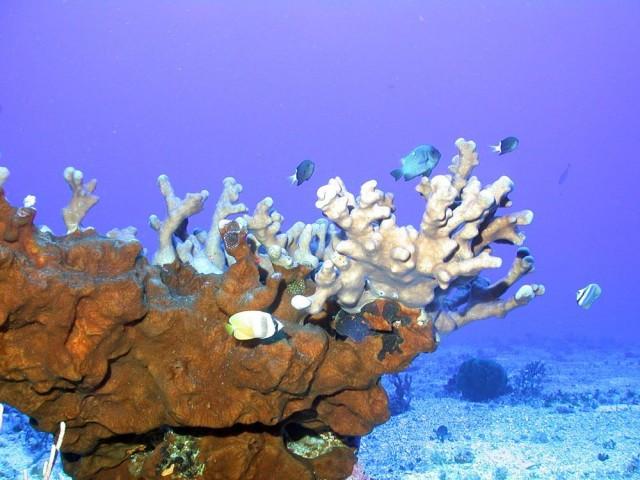We're not done decoding the mystery of the Red stripped Purslane, right? Do you still remember about it?
In case you can't remember it anymore, here is the picture of our mysterious organism:
The question again: "Does it exhibits Incomplete Dominance?"
Okay, so what did I tell you about Incomplete Dominance? (In case you haven't read or forgot about it, here's the link Incomplete Dominance)
Right!
Incomplete Dominance is a form of intermediate inheritance in which allele for a specific trait is not completely expressed over its paired allele. This results in a third phenotype in which the expressed physical trait is a "combination" of the the phenotypes of both allele.
Remember that in Incomplete Dominance the dominant trait of an organism is "incompletely" expressed. It fails to completely "dominate" the other allele. You might encounter articles or references that will say that "alleles blend to form a new phenotype" but actually it is not. Alleles are not blended together, the dominant trait is just expressed less strongly resulting to the less dominant trait effect that can be seen in the phenotype of an organism.
Why can't we call it blending?
Mendel highly disproved the blending idea of alleles (remember his Law of Dominance? Well if he agreed with that of blending model then, his law might be abolished, haha!). Let's take the situation of an orange Purslane as an example. If the orange Purslane self-fertilized, we can predict that the offspring will be orange also because the alleles of this organism "blends".
In contrast, when actual orange Purslane self-fertilized, it will produce red, orange and yellow Purslane in a ratio of 1:2:1.
So what hereditary law exists in that Purslane above?
It is known as Co-dominance.
Co-dominance is another non-Mendelian law. It is similar to incomplete dominance except for, there is really no dominant allele. Heterozygous organism will show the characteristics of the two different alleles at the same time. Alleles are being expressed equally.

It is like your Dad and Mom that has a strong personality, cannot "dominate" one another and so decided to compromise to stay together, expel domination and maintain world peace.
It is also like;
 |
| Amazing product of Codominance, isn't it? |
Hoping for another fruitful knowledge instilled to you for this day. Cheers!
 |
| Oooopsss! |
References:
- http://education.seattlepi.com/allele-dominant-recessive-codominant-5096.html
- https://www.khanacademy.org/science/biology/classical-genetics/variations-on-mendelian-genetics/a/multiple-alleles-incomplete-dominance-and-codominance
- http://www.yourgenome.org/facts/what-are-dominant-and-recessive-alleles
- google images




















